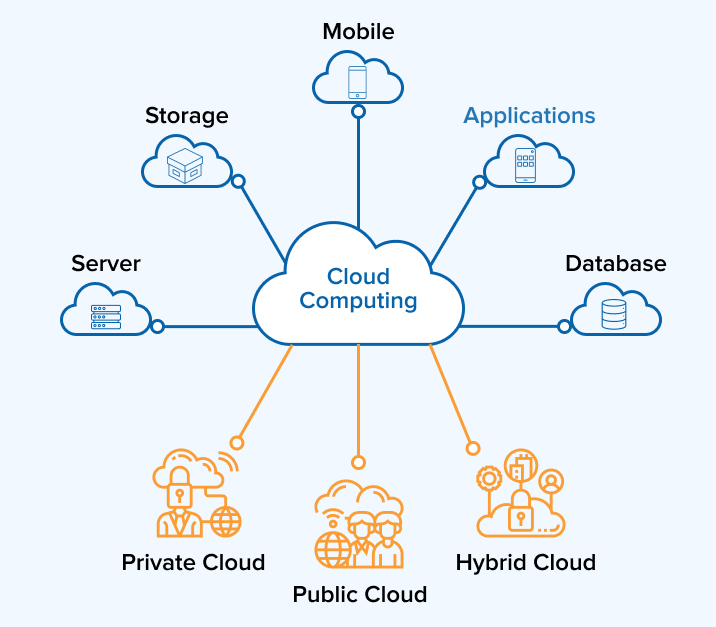Simplify Your Framework With Cloud Services
As businesses browse the ever-evolving landscape of innovation and information administration, the role of cloud solutions in simplifying framework has come to be progressively noticeable. How can companies efficiently browse this change and truly unlock the possibility of cloud services for simplifying their infrastructure?
Benefits of Cloud Services
Cloud services supply a streamlined strategy to handling IT facilities, providing companies with versatility, cost-efficiency, and scalability. Among the essential benefits of cloud services is the scalability they offer. Services can conveniently scale their sources up or down based upon need, guaranteeing they just spend for what they make use of. This versatility is specifically useful for businesses with rising and fall demands or those experiencing growth.
In addition, cloud solutions get rid of the need for services to buy expensive software and hardware. This cost-efficiency is a significant advantage, particularly for tiny to medium-sized ventures wanting to minimize in advance costs. By utilizing cloud solutions, services can access top quality IT resources without the substantial cost related to traditional facilities configurations.
Additionally, cloud solutions give companies with the adaptability to access their information and applications from anywhere with a web link. This degree of accessibility improves partnership amongst teams, allows remote job, and raises general performance. The adaptability offered by cloud solutions equips services to adjust quickly to altering market conditions and client needs.
Price Financial Savings and Scalability
Along with the functional advantages highlighted previously, the assimilation of cloud solutions right into a company's infrastructure brings forth significant expense financial savings and improved scalability. Cloud solutions use a pay-as-you-go design, permitting companies to range sources up or down based on current needs, therefore staying clear of the expenses related to preserving excess ability. This adaptability makes it possible for firms to adapt swiftly to rising and fall needs without incurring unnecessary expenditures.
Furthermore, cloud services eliminate the need for in advance investments in software and hardware, reducing capital expenses. Operating budget are also lessened as business no more require to handle and maintain physical servers, bring about reduced energy consumption and IT staffing costs. Additionally, cloud solutions offer automated updates and upkeep, making certain that the facilities remains safe and up-to-date without calling for hands-on treatments.
Boosted Safety Measures
Applying rigorous protection actions is extremely important when incorporating cloud solutions right into a business's infrastructure to protect sensitive information and ensure compliance with industry regulations. Cloud service providers offer boosted safety and security functions such as data security, firewall program defense, and multi-factor verification to minimize cybersecurity dangers.
Additionally, normal protection audits and conformity analyses assist identify vulnerabilities and make sure adherence to sector criteria. Business can additionally gain from attributes like computerized safety updates and real-time threat surveillance offered by cloud provider. By prioritizing protection steps and staying proactive use this link in addressing prospective threats, services can confidently utilize cloud services while shielding their important data from unauthorized accessibility or violations.
Transitioning to Cloud Facilities
To effectively incorporate cloud solutions right into a company's framework, a structured method that resolves the shift towards cloud-based services is vital. Transitioning to shadow framework includes cautious preparation and implementation to guarantee a smooth movement process. The very first step is to evaluate the present facilities and identify which systems and applications are appropriate for movement to the cloud. This evaluation ought to think about aspects such as data sensitivity, compliance demands, and performance demands.
As soon as the assessment is total, a movement approach need to be developed. This strategy should describe the timeline, sources, and duties site link for relocating each part to the cloud. It is vital to communicate this strategy plainly to all stakeholders to make certain placement and reduce disturbances during the transition.
During the migration monitoring, screening and procedure are important to determine and deal with any type of concerns immediately. Regular checkpoints must be established to track development and make necessary changes. Furthermore, training for workers on using cloud solutions should be given to ensure an effective transition and take full advantage of the benefits of the brand-new infrastructure.
Ideal Practices for Cloud Adoption
Effective adoption of cloud services pivots on the critical alignment of business purposes with technological abilities and organizational preparedness. To ensure a smooth change to the cloud, organizations must begin by carrying out a comprehensive evaluation of their existing infrastructure and recognizing which workloads are best suited for cloud migration. It is essential to involve crucial stakeholders from various departments in the decision-making procedure to obtain buy-in and attend to any kind of issues early.
One more best method for cloud fostering is to focus on security and compliance. Organizations has to thoroughly examine the protection measures used by cloud company and guarantee that their data is secured according to sector criteria and regulatory requirements. Applying robust data file encryption, gain access to controls, and routine protection audits can aid mitigate dangers connected with cloud fostering.

Final Thought

As services navigate the ever-evolving landscape of modern technology and data administration, the duty of cloud services in streamlining infrastructure has come to be increasingly popular - cloud services press release. How can companies successfully browse this change and genuinely open the possibility of cloud services for simplifying their facilities?
Cloud solutions offer a streamlined method to handling IT framework, providing companies with cost-efficiency, adaptability, and scalability. By making use of cloud solutions, businesses can access premium IT sources without the substantial rate tag linked with typical framework setups.
To ensure a smooth transition to the cloud, companies must start by carrying out an extensive assessment of their current framework and identifying which workloads are best matched for cloud movement.